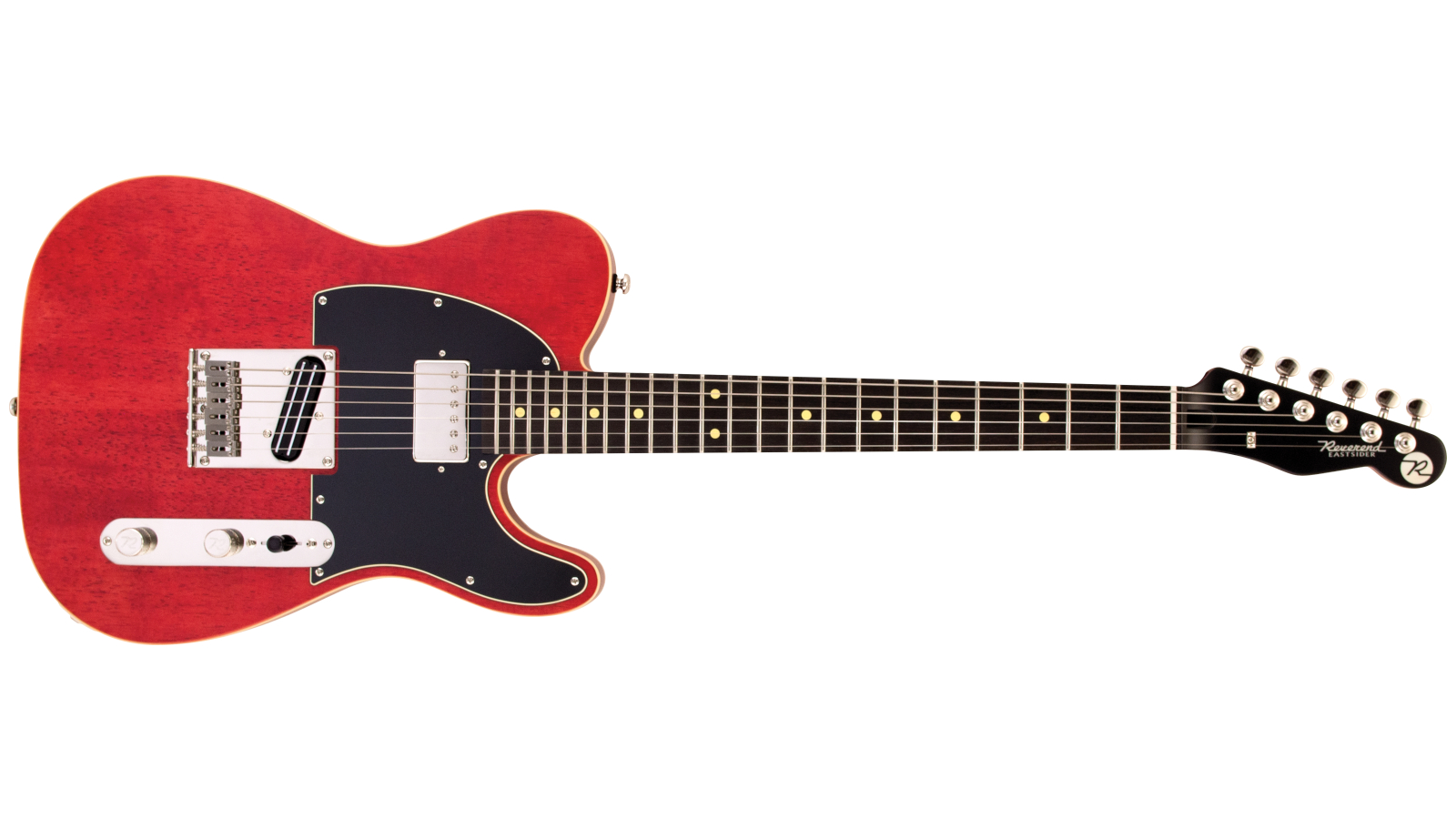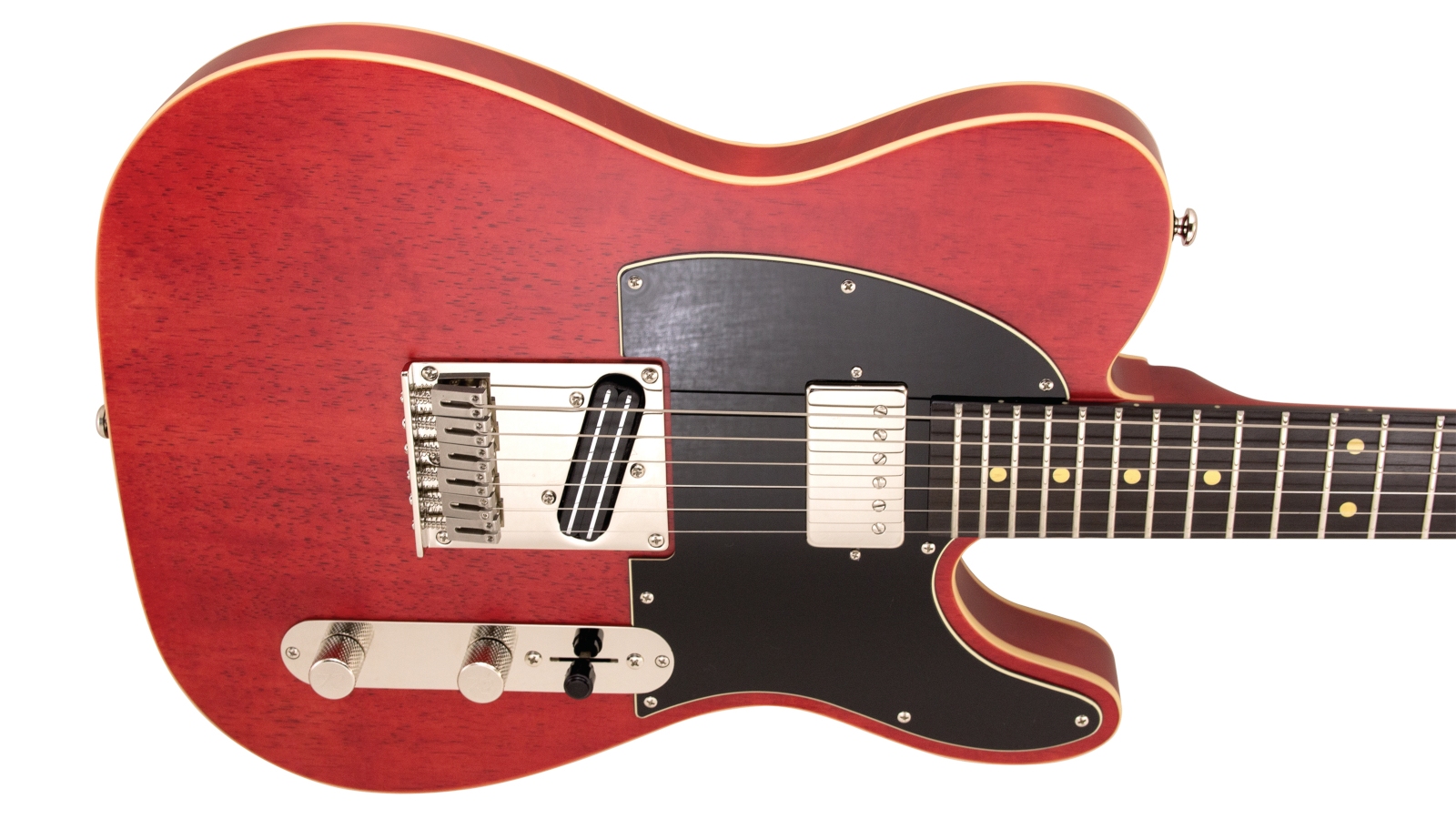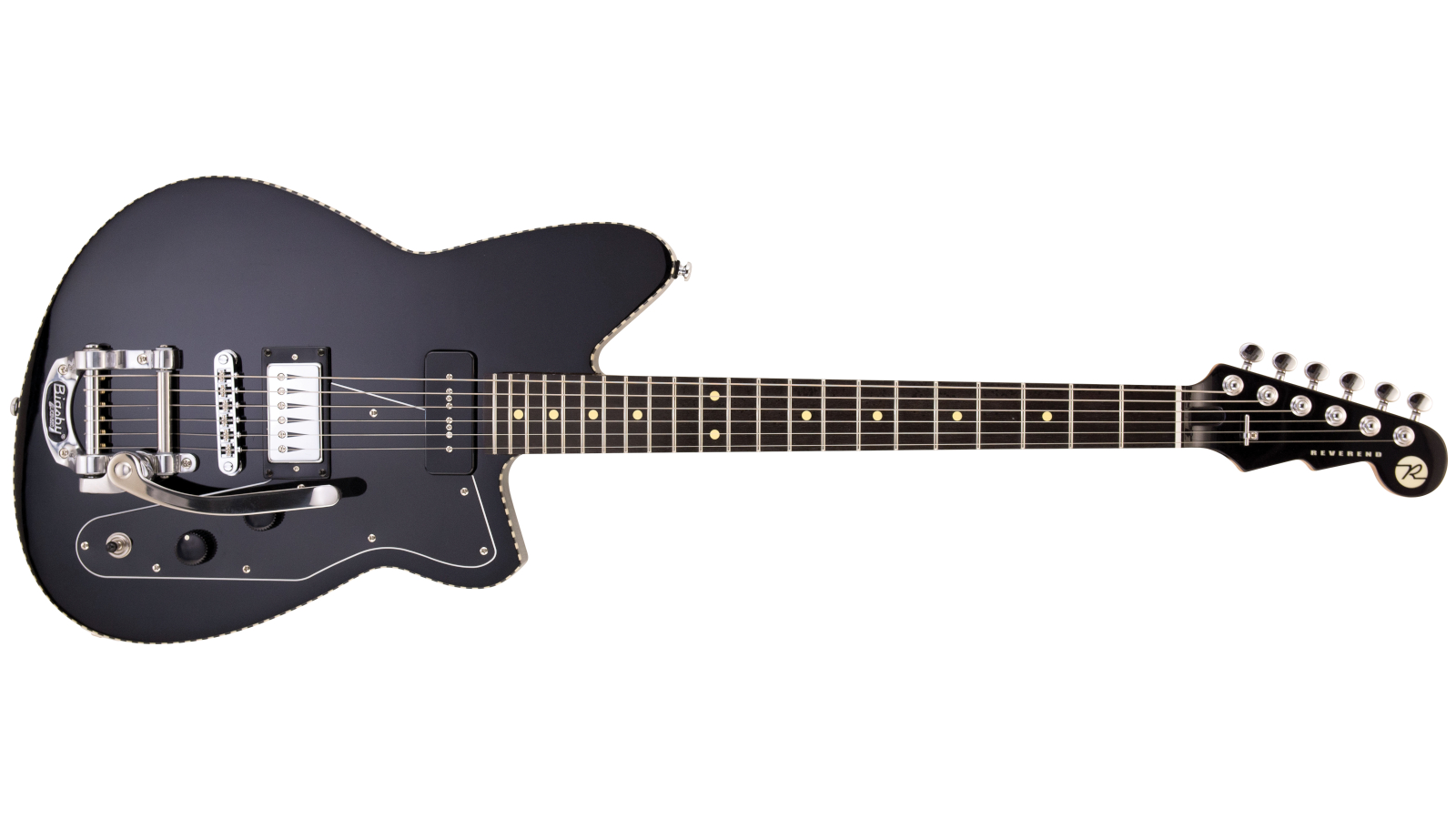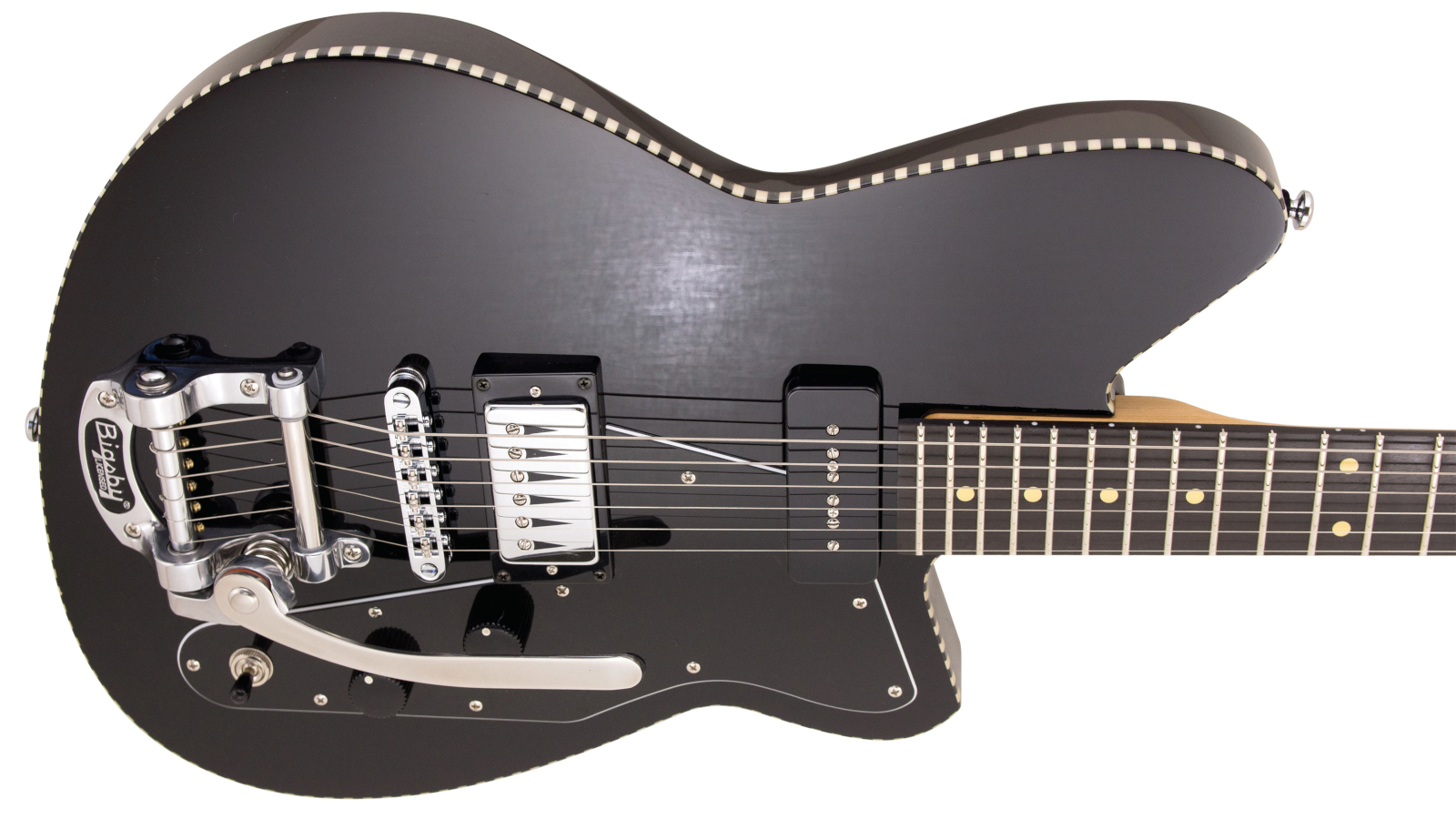GuitarPlayer Verdict
Both new Reverend Signature models reveal thoughtful design efforts that result in trenchant and original performances
Pros
- +
Pete Anderson Eastsider Custom: A well-built T-styled hybrid offering thick yet clear tones through cleans and overdrive alike
- +
Rick Vito Soul Agent: A stylish and well-executed design, delivering impressive versatility and originality throughout its range
Cons
- -
Pete Anderson Eastsider Custom: Some slightly sharp fret ends
- -
Rick Vito Soul Agent: Pickup selector switch can be tricky to access with Bigsby in the way
You can trust Guitar Player.
Thanks in part to an elevated design ethos and consistent quality control, the reputation of Reverend Guitars seemed not to suffer in the least when production moved offshore back in 2006, and the willingness of notable artists to keep endorsing creative signature models further attests to that achievement.
Both Pete Anderson and Rick Vito already have multiple Reverend guitars in their names, so the release of their new respective Eastsider Custom and Soul Agent models tells us they must still be pleased with founder Joe Naylor’s design stable in Toledo, Ohio, and manufacturing at Mirr Music Ltd. in Korea.
Taking extended riffs on existing models, each of these new artist electric guitars is rife with Reverend’s familiar originality, while they offer specs and features that should appeal to players well outside each artist’s fan base. And although they share some of the same tonewood choices, they’re about as different as they could be, other than similarly representing the maker’s creative take on retro-modern design.
PETE ANDERSON EASTSIDER CUSTOM

Although Reverend’s first Signature model for Pete Anderson was the semi-hollow ES-style PA-1 – a design more central to his latter-day adventures in soulful blues and gutsy instrumentals – the original Eastsider T that followed stuck closer to the Esquire the guitarist had often used to inject his Bakersfield-infused twang into several early hits from new-country artist Dwight Yoakam.
Although part of the name and at least the basic lines have been retained in the Eastsider Custom, the design has morphed into something very different indeed. Eschewing the standard Fender scale length for a Gibson-leaning 24 ¾ inches, the Eastsider Custom further consolidates that influence with a glued-in neck that’s 1 11/16 inches wide at the nut.
Taking it further away from the Fullerton template, the double-bound body is made from chambered korina, and the neck is solid three-piece korina
Taking it further away from the Fullerton template, the double-bound body is made from chambered korina, and the neck is solid three-piece korina with an unbound ebony fretboard. Overall, the look is neatly custom indeed: The aged white binding elegantly frames a rich satin cherry finish on the body’s top and back that reveals the korina’s finely speckled grain, while the black three-ply pickguard, ebony fretboard and black headstock face contrast it all beautifully.
The guitar’s in-house pickup complement arguably takes it even further out of Telecaster/ Esquire territory, although Reverend strives to retain some meaty T-style twang here. in the neck position is an HA5 humbucker wound with 42-AWG wire to around 7.5k ohms, and carrying an Alnico V bar magnet. In the bridge position, the Telebucker dual-rail humbucker is wound with finer 44-AWG wire to around 14k ohms and loaded with a ceramic magnet.
All the latest guitar news, interviews, lessons, reviews, deals and more, direct to your inbox!
They’re wired to a three-way switch with master volume and tone controls, with a treble-bleed network on the former and a push-pull on the latter to throw the pickups out of phase.

Hardware follows the “modern-T” standard pretty closely, with a bridge base secured to the body by screws at both the rear edge and the front corners, and loaded with six individually adjustable block saddles, fed by through-body stringing loaded into ferrules in the back. Reverend’s Pin Lock locking tuners populate the other end, and access to the dual-action truss rod is via the headstock.
In the hand, the Eastsider Custom feels solid and confident. Its medium-C neck profile presents a comfortably rounded shape that most players should find easy to work with, and when strummed unplugged the guitar delivers a rich, balanced tone, with decent acoustic volume. The 22 medium frets are well polished and smoothly crowned; there’s a little snag at a few of the fret ends, but some of that sprouting will likely settle in with warmer, more humid weather. Overall, build quality is great, as are the finish and setup.
Overall, build quality is great, as are the finish and setup
Tested through a tweed Deluxe-style 1x12 combo, a 65amps London tube amp head with 2x12 cab, and a Quad Cortex modeler into studio monitors and headphones, the Eastsider Custom presented elements of the F-to-G hybrid we might expect, along with elements of its own design that make it something different, and a lot of fun.
Korina is often talked about as a lighter cousin to mahogany, but it also packs its own upper-midrange zing, that often rings through in both clean and overdriven settings and helps a guitar like this cut through the mix. In bright guitars it can sometimes be strident, but the Eastsider Custom has a warmth and girth at its foundation that play this to its advantage, enhancing complexity and bite.
Given the dual humbuckers, clean tones often benefit from rolling down the guitar’s volume control slightly, but they’re still meaty and muscular when you get there, implying roadhouse blues and garage rock more than country twang.
The Eastsider Custom particularly excels when paired with some overdrive, though, and proved a gristly rocker through Plexi-like settings. And while I often find out-of-phase settings pointless in my own playing (I’d have thought coil-splitting might be more useful here), even that option added some scooped, funky chime that gave the dirt a little more character. Cool stuff.
Specifications
- NUT: Boneite synthetic, 1 11/16” wide
- NECK: Korina, medium-C profile
- FRETBOARD: Ebony, 24 ¾” scale, 10”-14” compound radius
- FRETS: 22 medium
- TUNERS: Reverend Pin Lock
- BODY: Chambered korina
- BRIDGE: Modern T-style with six block saddles
- PICKUPS: Reverend H5A humbucker neck, Telebucker dual-rail bridge
- CONTROLS: Master volume and tone, three-way switch, phase switch on tone control
- FACTORY STRINGS: D’Addario .010-.046
- WEIGHT: 7.4 lbs
- BUILT: Korea
RICK VITO SOUL AGENT

Reverend’s association with Rick Vito began with a signature model during the pre-import/semi-hollow/phenolic-laminate era. The new Rick Vito Soul Agent model riffs on that, but uses traditional tonewoods.
It also employs Reverend’s longstanding Double Agent as its springboard, changing up several appointments and cosmetic details in a guitar intended to capture both the style and sonic preferences of the first-call six-stringer, who has worked with Fleetwood Mac, Jackson Browne, Bob Seger, John Mayall and a host of others.
As far as the maker has come, it’s sometimes easy to forget that Reverend launched its guitar designs on semi-hollow/chambered bodies à la the Danelectro models of the 1950s and ’60s.
The offset-waist, asymmetrical double-cutaway body is made of heavily chambered korina with a solid spruce top, coupled to a solid, roasted-maple neck
The Soul Agent recaptures a bit of that DNA in its build. The offset-waist, asymmetrical double-cutaway body is made of heavily chambered korina with a solid spruce top, coupled to a solid, roasted-maple neck with six-screw attachment. Its medium-oval profile is just a tad shallower in depth than the Eastsider Custom’s “C,” and this one is stretched to the Agent platform’s usual 25 ½-inch scale length. It carries an ebony fingerboard with 22 frets of the same medium gauge, with an extension over the body to enable the final fret, a width of 1 11/16 inches across the nut, and a 12-inch radius.
Specs aside, the cosmetics are likely to grab many a potential player’s eye. Available in Midnight Black (as reviewed) or Oceanside Green, the body sports a broad checked black-and-white binding around the top, black three-ply pickguard, black cupcake knobs and a matching black headstock.
Further Vito-certified styling includes the stenciled black pointers on the bridge pickup’s cover, although this is a different unit than the Dual-Pro pickup on the first Vito Signature model that debuted the look. That one was a wide, single-coil based roughly on the pickups on the Supro Dual Tone guitar of the late ’50s, whereas the Soul Agent’s bridge pickup is a standard Reverend HA5 humbucker. It’s a hotter wind than the HA5 neck pickup in the Eastsider Custom, cranked to around 13k ohms using 43-AWG wire and powered by an Alnico V magnet. The neck pickup is Reverend’s 9A5 single-coil, a P-90-based unit wound with 42-AWG wire to around 7.5k ohms, and loaded with an Alnico V magnet.

These are wired to a three-way toggle selector, along with master volume and tone controls that hide a couple of tricks: Push-pull switching on the former unleashes a Twang mode that revoices both pickups for a brighter, tighter response, and popping up the latter throws the pickups out of phase.
Hardware includes a Bigsby-licensed B-50 vibrato with roller-saddle bridge, Pin Lock locking tuners, and a three-string retainer for the G, B and high E, along with headstock-end access to the dual-action truss rod.
As with most Reverends I’ve tested, the Soul Agent exhibits quality craftsmanship and a confident setup, and this guitar rings with an airy, acoustic chime when played unplugged that hints strongly at its spruce top and chambered body. The Bigsby requires some acrobatics to access the selector switch, but it’s something you’d likely get used to.
The wood choices, scale length and pickup complement worked beautifully together
Tested through the same rigs, the Rick Vito Soul Agent proved similarly fat, warm and rich at its core, but with a lithe, wiry personality all its own, and a boatload of sonic variations thanks to the double push-pull switching (yielding eight unique tones in all).
With both controls down, the cleans are almost always a hair grainy, a trait many players throughout the broad swathe of alternative styles will really dig. Its cleanest cleans are had with the Twang switch engaged, which delivers appealing chime and jangle reminiscent of Gretsch as much as Fender, and which adds tasty sting and articulation to overdriven settings.
Into a cranked amp or overdrive pedal, both pickups rock out with bountiful girth and grit in standard mode, with an edge of bite and clarity through even high-gain settings that proved impressive for a humbucker and a P-90, never collapsing into mush, as many will do.
The wood choices, scale length and pickup complement worked beautifully together to create voicings that were original, yet capable of tackling just about anything.
Specifications
- NUT: Boneite synthetic, 1 11/16” wide
- NECK: Roasted maple, medium-oval profile
- FRETBOARD: Ebony, 25 ½” scale, 12” radius
- FRETS: 22 medium
- TUNERS: Reverend Pin Lock
- BODY: Chambered korina with solid spruce top
- BRIDGE: Roller-saddle bridge with licensed Bigsby B-50 vibrato
- PICKUPS: Reverend 9A5 P-90 neck, H5A humbucker bridge
- CONTROLS: Master volume and tone, three-way switch, Twang switch on volume, phase switch on tone control
- FACTORY STRINGS: D’Addario .010-.046
- WEIGHT: 7.8 lbs
- BUILT: Korea
THE VERDICT
Both new Reverend Signature models reveal thoughtful design efforts that result in trenchant and original performances. Build quality is great on both, as we’ve come to expect, and each brings something arguably unique to an otherwise crowded field.
Either is worth laying your hands on, depending on your needs, but the Rick Vito Soul Agent earns an Editors’ Pick Award in this instance for its sheer effortless versatility.
Visit Reverend Guitars for more information.
Dave Hunter is a writer and consulting editor for Guitar Player magazine. His prolific output as author includes Fender 75 Years, The Guitar Amp Handbook, The British Amp Invasion, Ultimate Star Guitars, Guitar Effects Pedals, The Guitar Pickup Handbook, The Fender Telecaster and several other titles. Hunter is a former editor of The Guitar Magazine (UK), and a contributor to Vintage Guitar, Premier Guitar, The Connoisseur and other publications. A contributing essayist to the United States Library of Congress National Recording Preservation Board’s Permanent Archive, he lives in Kittery, ME, with his wife and their two children and fronts the bands A Different Engine and The Stereo Field.


